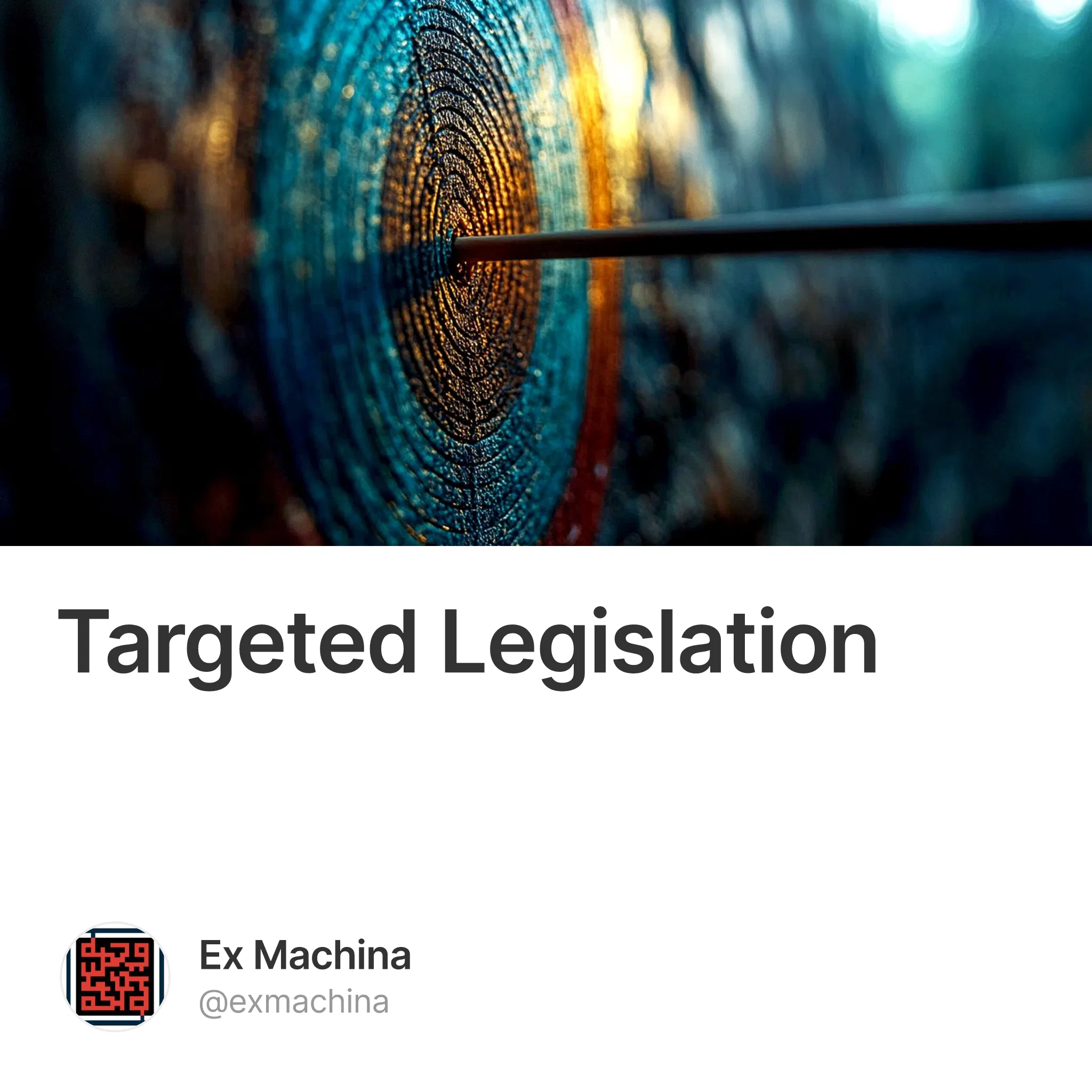Narrowly targeting laws to specific countries or companies can have unintended consequences. They can push customers in different directions or serve as an unanticipated impetus for entrepreneurs to think of new and innovative approaches. In both instances, the outcomes are unexpected.
This is a link-enhanced version of an article that first appeared in the Mint. You can read the original here.
Laws are almost always designed to be broad and aimed at addressing a range of different issues. However, governments sometimes deviate from that approach, enacting targeted legislation aimed at narrow outcomes. The problem is that even though lawmakers come to this process with a clear sense of what they want to achieve, the outcomes of this approach are often not what they intended.
TikTok Alternatives
Take the Protecting Americans from Foreign Adversary Controlled Applications Act (PAFACA), a law designed to ban TikTok in the US. Once the Supreme Court upheld the constitutional validity of the law, Bytedance, the Chinese-controlled company that owns the viral video app had little option but to shut it down.
Long before the app went dark, TikTok content creators had started looking for alternatives. Many of them began to migrate to an app called Xiaohongshu (meaning Little Red Book) that was already wildly popular in China. It added over 700,000 new US users in just two days, making it the most downloaded free app on US app stores.
PAFACA had banned TikTok because US lawmakers were worried about the control that the Chinese government could exert on US users. But all the ban did was send those same users into the arms of yet another app, one that was, if anything, likely to be even more firmly under the control of the Chinese government. That the app is named after a book by Mao that is the very embodiment of the Chinese philosophies that the US government stands so firmly against, is a particularly delicious irony.
The other problem with targeted legislation is that attempts to slow down progress in specific fields often leads to unforeseen outcomes. Rather than retarding progress, they serve as catalysts for countries and companies singled out by these regulations in developing new and often highly innovative alternatives to the technology being so zealously protected.
iFOG Gyroscopes
In the 1980s, the G7 countries imposed Missile Technology Control Regime (MTCR) restrictions on India to limit its ability to develop missile technologies. This meant we could no longer purchase key technology components that we desperately needed for the navigation and inertial guidance systems we were using in our missile defence systems. In the face of this broad embargo, we had no option but to initiate the Integrated Guided Missile Development Programme, aimed at developing the technologies we needed ourselves.
As a result of our investments in this programme, we were able to build interferometric fiberoptic gyroscope (i-FOG) technology that used the Sagnac effect to provide precise measurements of rotation and angular velocity. Not only were the resulting systems smaller and lighter than those we had been denied, since they had no moving parts, they were less prone to mechanical failures. Instead of knee-capping our missile development capabilities, MTCR restrictions served as the impetus we needed to develop critical defence technologies ourselves.
Over the past few years, the US has been ratcheting up its efforts to slow down Chinese AI development by taking a “small yard, high fence” approach. After identifying a small set of critical technologies, the US imposed aggressive regulatory constraints on their export to China in order to ensure maximum containment. As a result, Chinese companies have been denied access to Nvidia’s cutting-edge chips (A100s and H100s), on which almost all state-of-the-art large language models are being trained. This, the US administration believed, would hamstring Chinese AI development to the point where it would be impossible for them to catch up.
DeepSeek
In actual fact, what this did was provide Chinese AI companies the incentive they needed to discover new and more efficient ways to train AI models. One such company, DeepSeek, chose to focus its efforts on software-driven resource optimization. Since it had no option but to use the Nvidia H800s (the only GPUs the company was allowed to sell in the Chinese market because their performance had been capped at less than half the speed of Nvidia’s top products), it developed novel architectures and improved training efficiencies to get the most out of its limited hardware resources.
Earlier this month, the Chinese startup released DeepSeek R1, an open-weights, reasoning model that is as good, if not better, than the most advanced models currently available. Given that its training cost was less than $6 million, it has managed to achieve outcomes equivalent to what state-of-the-art models from leading AI companies like OpenAI have achieved, at a tiny fraction of the cost. Instead of crippling the Chinese AI industry, the US policy of strategic containment has spurred them to improve their capabilities to the point where they have taken global leadership in the field of affordable, high-performance AI.
In its last days, the Biden administration imposed a set of licensing restrictions aimed at making high-end AI technology available only to its closest allies. India was more than a little surprised to find that it was not on that list. This latest form of targeted legislative actions by the US puts India in the same position as China.
Perhaps this is the impetus Indian companies need to start developing indigenous AI models. If they do not, what will happen if and when the models we currently depend on are made unavailable to us?

